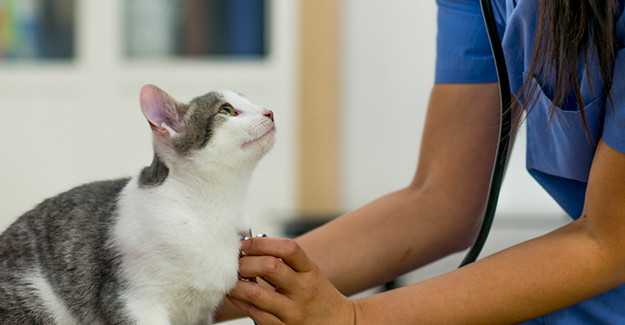Create a safer and healthier environment for pets and staff with complete indoor air and surface disinfection

Preventing infection and protecting against cross-contamination, outbreaks and disease transmission is a vital part of operating a veterinary or pet-care facility. These concerns have been heightened in recent months by respiratory illnesses that have impacted pet health in over 14 states, but the challenges of minimizing risks of transmission are not new and will likely only get more challenging. Choosing the right disinfection strategy for your practice’s needs is a crucial step in preventing costly and devastating outbreaks of kennel cough, salmonellosis, canine influenza, canine parvovirus and other infectious diseases.
Traditional disinfection strategies present challenges and have shortcomings
Most professionals in the veterinary and pet-care industries strive to have safe and healthy environments in their facilities. Traditional disinfection strategies are focused almost exclusively on surface disinfection, which usually involves toxic chemicals and staff time. The efficacy of the disinfection solution is dependent on the proper preparation and application of the product. Indoor air quality is addressed solely through standard filtration systems and high levels of air changes per hour. These disinfection strategies unfortunately do not completely eliminate the risk of contamination and transmission of infectious diseases in veterinary clinics and pet care facilities. Traditional approaches to disinfection are also costly—labor costs, energy usage and chemicals are bad for your bottom line.
Deploy a more effective and cost-effective solution that continuously disinfects your entire facility without burdening your staff with additional responsibilities
Your staff already has their hands full providing first class service to your customers, and hiring more people to address disinfection issues is generally not cost-effective. The answer is to find a scalable complete indoor disinfection solution that is effective at both disinfecting surfaces and eliminating airborne microorganisms (like bacteria and viruses). It is these pathogens that result in the transmission of infectious diseases like kennel cough. Your complete indoor disinfection solution should operate 24/7 without staff involvement, have low maintenance requirements, use minimal electricity and not have its effectiveness be subject to risk of human error.
Adopt a system that is safe to use, treats the entire facility and has been validated by third parties
It is important that the technology be ozone free, certified organic, sustainable and chemical free, so that customers and staff know the solution is safe for them and their pets. The solution should be supported by extensive third-party testing, both in real world applications showing a substantial reduction of microorganisms in the air and on surfaces, and in laboratory testing on numerous pathogens found in veterinary/healthcare environments. The technology should also be validated to be effective against volatile organic compounds (VOCs), in part because the removal of VOCs associated with the smell of pet urine and feces, together with the reduction of bacteria, viruses and mold, has a positive impact on eliminating harmful odors throughout the facility. A safe, healthy and odor-free environment will—in addition to being better for your pets and staff—provide you with a marketing and branding advantage.
Further reading
An article describing the benefits of a safer and healthier environment is available here: https://patch.com/virginia/fairfaxcity/old-dominion-animal-health-center-prioritizes-staff-animal-health-nodx?utm_source=shared-email&utm_medium=email&utm_campaign=share.
Dave Pommerening is the Chief Strategy Officer at AIRPHX, where he is focused on creating cleaner, safer and better environments for pets.
Photo credit: FatCamera © E+ via Getty Images Plus
Disclaimer: The views expressed, and topics discussed, in any NEWStat column or article are intended to inform, educate, or entertain, and do not represent an official position by the American Animal Hospital Association (AAHA) or its Board of Directors.



